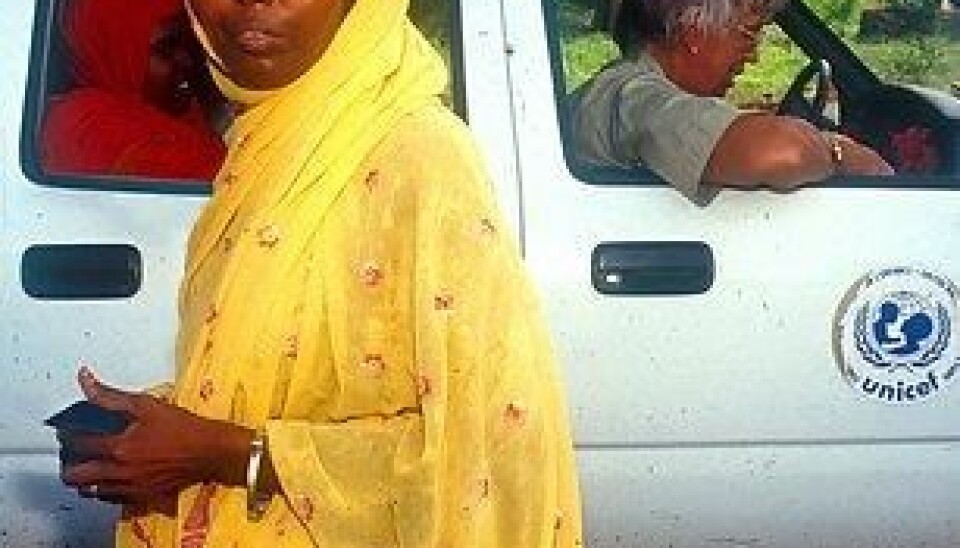This article was produced and financed by University of Bergen

Africa's women rise on quotas
In 2008 Rwanda became the first country in the world to fill its parliament with a majority of women. Now the rest of Africa follows in the landlocked country’s footsteps.
Denne artikkelen er over ti år gammel og kan inneholde utdatert informasjon.
In the last decade there has been a huge increase in the number of women elected to legislative bodies worldwide, and sub-Saharan Africa is the region showing the fastest and most formidable growth in women’s participation.
“In the last two decades, we have witnessed a female explosion in African politics,” says Postdoctoral Fellow Ragnhild Louise Muriaas at the Department of Comparative Politics at University of Bergen (UiB).
“If we look at figures from a country such as South Africa, we find that in the apartheid era only 1.7 percent of elected officials were women, whereas the number now stands at 42.3 percent.”
Top ranking nations
“As well as Rwanda topping the list, countries such as the Seychelles, Mozambique, Senegal, South Africa, Tanzania, and Uganda are all amongst the top 21 countries in the world when it comes to female parliamentary representation,” informs PhD Candidate Vibeke Wang.
By comparison, Norway stands at number eight on the list of female parliamentary representation.
The two researchers point to one primary factor for the positive developments in Africa: quotas. And quotas are used regardless of the type of regime and differ from country to country.
Several international and regional organisations support an increase in the number of female parliamentarians. The African Union (AU) and Southern African Development Community (SADC), amongst others, have worked towards a goal of 50/50 representation in Malawi and Zambia.
But does the rise in female representation necessarily lead to more democracy?
“Many people assume that democracy and representation of women go hand in hand. After all, in the West women first got voting rights, then they fought for parliamentary representation in the national legislatures, before becoming government ministers. It was a gradual process towards democracy,” Muriaas says.
“There is however no natural connection between democracy and women’s representation in Africa.”
“Actually, many of the countries with the highest number of women parliamentarians could be classified as authoritarian or semi-authoritarian,” adds Wang.
Stand up and be counted
The two researchers explain that the general desire for more women in Africa’s parliaments arise from a belief that this is good for democracy; the idea being that the more women elected, the more different – and differing – voices are heard.
However, recent research shows that getting women elected does not by itself expand political and civil rights for minority populations or special needs groups in some African countries.
“This is problematic, as many believe that a democratic platform is important if the quota system is to make sense. In Uganda the quota system has been known to benefit the ruling party,” Wang explains.
She does however paint a more complex picture of Ugandan politics. After all, the quota system has been championed by grass roots groups and women activists who themselves stand to benefit from the quotas.
Symbolic representation
In her dissertation, Wang measures the effect of female representation in Uganda in several ways. One of her methods is to look at how – and if – legislation benefits women.
“In the parliamentary period of 2006–2011, there was an increase in the number of pro-women laws passed. From a research point of view, this is both interesting and unexpected,” she says. “One explanation may be that there is broad cross-party female networking in Uganda’s parliament.”
“Yet, legislation may be the weak point for women’s rights in Africa,” Muriaas is quick to add.
“Measured in different terms, such as using women’s impact on parliamentary culture or whether women’s issues are subject to discussion, the results are not as encouraging.”
Research into women’s representation puts an emphasis on what is known as ‘symbolic representation’, where one looks at the effect of having women in power in the public sphere.
“Women leaders are more visible now. The symbolic effect of this is however more difficult to measure. But it is still important,” says Wang.
“It is also worth noting that the increase in women’s representation is not only due to external pressure from the United Nations or other international bodies. A lot can be credited to local processes,” Muriaas says before adding, “And even better, both women and many men in various African countries view this as a natural development.”
Translated by: Sverre Ole Drønen

































